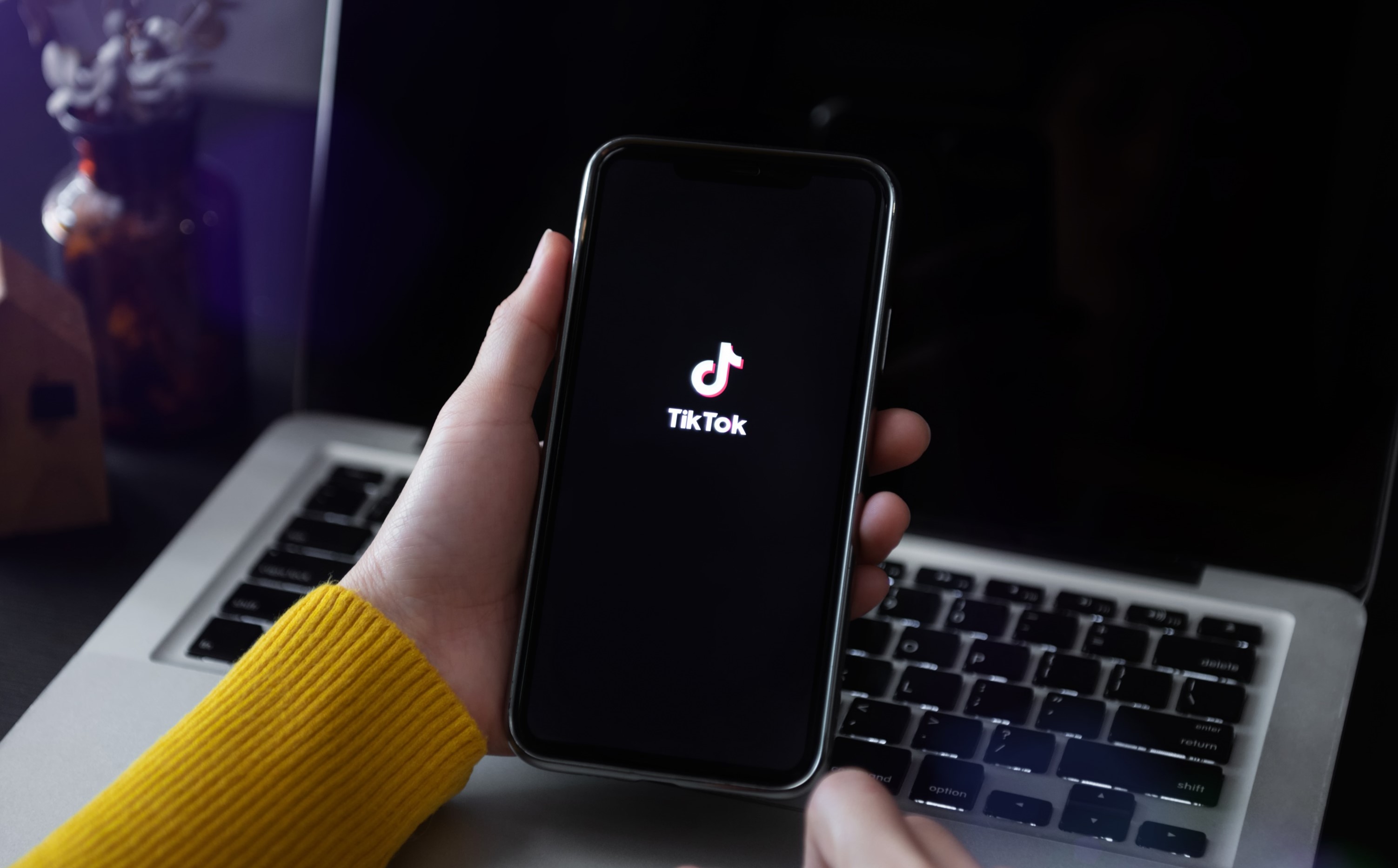Download our latest report - Expanding card programmes internationally -
here Opens in a new window
The Thredd team
November 06, 2025

Jim McCarthy, our CEO, looks at the increasing popularity of shopping via social platforms.


Jim McCarthy
The first in a series of deep dives into the payments industry, Jim explores the role that TikTok is playing in ecommerce growth and the future of the payments landscape.
Social media has transformed the eCommerce playbook by changing how brands engage with their customers online. While I see potential in all the apps, TikTok is interesting. Short-form video is proving immensely popular with people of many different demographics – it's not unique to just Gen Z or Millennials.
The rapid rise of TikTok has been so formidable; it has forced the older platforms to pivot their strategies to incorporate short-form video into their social tech stack, as the data speaks for itself – people love it. This presents opportunities for retailers as suddenly; you have a highly engaged captive audience open to making a purchase should they be sufficiently inspired.
Consumers use an app like TikTok to while away their time and be entertained. If they see something they want to purchase, whether that be through an influencer or one of the ads pushed to them, they are taken out of TikTok's ecosystem to the merchant (I'll come onto the TikTok Shop in a moment). A process[1] often fraught with friction and delays to sale as they navigate the checkout experience.
Every second increases the risk of them changing their mind as this is often an impulse buy, not a planned buy. The consumer is on TikTok to be entertained, not shop. Delays could see them pull back and scroll to the next video, often forgetting the item they were buying.
This is why on an app like TikTok, “speed to purchase” becomes important and why introducing a utopian 'one-click' experience is the goal of most, if not all the social media platforms. Having the ability to accept C2B payments in-app and remove the friction that customers currently experience. Thus, improving the CX and capturing a greater share of the wallet, introducing a new revenue stream for TikTok, who takes a percentage from the sale, as well as extending the merchant’s digital shop window.
China is the undisputed leader in social media C2B payments, with the super app WeChat being the obvious poster child for success. Something that folks often forget, though, is that the tech behind WeChat and some of the other Chinese super apps, like Alipay, exists in a similar guise in both the US and Europe. It's just a case of adoption and growth rates being exponential in China and slower to adopt in the rest of the world.
When thinking about how to replicate WeChat's success in the West, whether that be TikTok or another super app in the making, it's worth studying how WeChat became so intrinsic to Chinese culture. WeChat adopted a clever marketing campaign by introducing digital red envelopes;[2] I think it was back around 2016. Red envelopes, or rather 'Hong Bao,' are an important part of Chinese culture and money-giving to family and friends. In doing so, WeChat accelerated adoption rates by helping to digitize the process and making sending payments a social norm.
It's similar in many ways if you think about the speed of Tap to Pay growth in the UK, specifically London, with the Underground introducing Oyster Cards. That tech was revolutionary when it was launched in 2003, eliminating the need for cash and reducing queues.
Transport for London (TfL) is trusted by Londoners; therefore, when the tech was made available, they trusted it, and once they saw how much it made their lives easier, it swiftly became a standard way to pay for all London transport. The success in London is viewed by many as the catalyst for contactless being adopted more generally by British consumers and trailblazing the way for other world cities to introduce the tech as a convenient way to pay for travel.
My point here is that I think for any payments technology, including an app like TikTok venturing into eCommerce, to become mainstream and a part of everyday life in any country, it needs to tap into the cultural DNA of that country and earn the right to be trusted. What works in China does not work in the UK, the US, or Australia, and vice versa. Shopping behaviours differ from country to country, as do social media consumption habits.
Then, of course, there is understanding the financial and digital regulatory regimes of each country and ensuring TikTok is compliant. That's a complex and often expensive endeavour for any company, and TikTok is no exception. TikTok is also famously experiencing issues in both the US and Europe.
I watched some of the live streaming of TikTok CEO Shou Zi Chew in front of Congress back in March, and that laid bare significant issues that US lawmakers have over TikTok's relationship with China and concerns over data privacy and national security. That hasn't gone away, and TikTok is having trouble attracting merchants to its online shopping service consequently, with the threat of the US government banning the app casting a shadow.
Then in Europe, in July, TikTok failed to fully pass a stress test[3] conducted by the EU's governing body, raising question marks over its compliance with the upcoming EU Digital Services Act and how the big tech giants adhere to strict codes of conduct pertaining to 'systematic risks' for society – as in how they comply with regulations on matters such as disinformation, data protection, and user protection. These are all major headwinds to growth, as they distract TikTok from being able to invest in growth areas, like eCommerce.
This may be why Shou Zi Chew recently came out and said that TikTok is increasing investment[4] in places like Indonesia in Southeast Asia. With a reported 125 million Indonesian users a month, that's an attractive captive audience for retailers to access. From what I've heard, the Indonesian Central Bank has viewed its application favourably. If they can obtain a payments license there, that's a major win, as Indonesia is the largest economy in Southeast Asia. Let’s take Big Pay as an example, the mobile wallet provider should be included in the conversation when looking at maximising user opportunity in the country. Most recently accelerating its position with AirAsia by offering convenience and choice at checkout for the travel consumer via the AirAsia Superapp. It’s an interesting time in this space for the country and could set the blueprint for other countries if they get it right.
It will be the litmus test for future market entries and puts them in direct competition with Southeast Asian eCommerce giants like Alibaba's Lazada and Sea's Shopee. With its 'made-in-China' TikTok Shop also in steep competition with the likes of Shein and, more recently, Temu, who have both ramped up their expansion in the West in recent years.
Not to mention TikTok's interesting 'Amazon-like' push with the launch of eCommerce fulfilment for companies in places like the UK, selling via the TikTok Shop. Just like Amazon, TikTok's new logistics program called 'Fulfilled by TikTok (FBT)' sees TikTok entering the marketplace space, with FBT offering merchants in the UK and several markets in Asia, picking, packing, and shipping services for products sold on its app. As for how successful this venture will be in competing in the marketplace space, costs are one determining factor; another is going to be trust, which brings me onto my last point – the consumer.
“TikTok could develop the best shopping user interface, but if their platform has a reputation for fraud, consumers will not trust it, and that goes for any social media platform. Ensuring TikTok incorporates world-class fraud security around its payments processes will be paramount.”

Is there a future for social commerce?
When thinking about barriers to TikTok's international expansion into eCommerce, we need to consider the views of the consumer. For them, the biggest concern when shopping online, in general, is always around security and the risk of fraud. For a platform like TikTok to succeed in eCommerce, trust in the platform is vital. Is my money safe? Is the merchant genuine? Is the product genuine? We all hear the stories about scams and fraud through social media. Just go onto YouTube and watch all the videos from consumers sharing their shopping experiences, and you can touch the tip of the iceberg of the issues.
So, going back to my comment at the start and the utopian ideal of creating a 'one-click payment experience' for consumers to make shopping on TikTok easy and fast, the additional challenge is security - how do I do this securely and not put the consumer at risk? TikTok could develop the best shopping user interface, but if their platform has a reputation for fraud, consumers will not trust it, and that goes for any social media platform.
Ensuring TikTok incorporates world-class fraud security around its payments processes will be paramount, as will be how they vet the retailers who are allowed to sell on their platform, either through direct advertising and website links, or the TikTok shop.
What customer protection do you have in place for consumers who have been defrauded by an untrustworthy seller? Can they get their money back quickly from you? Are you, TikTok, taking responsibility for that? Or are you passing the buck to the customer to fight through other channels? Again, all this impacts consumer trust in whether they use the platform or not, particularly if TikTok profits from every transaction and wants to see both transaction volume and transaction value rise.
Consumers might be willing to place a bet on a small item if the payment experience is secure. For example, if they can use a trusted concealed payment method, like PayPal or Apple Pay, for a twenty-dollar or less impulse buy. But they will think twice if an item is of higher value and there is a risk of them losing their hard-earned money to fraud.
Gen-Z, in particular, has been conditioned to be wary of scams, fake news, and inauthentic influencer endorsements, leading them to increasingly seek out authenticity and branded websites, rather than trust a one-stop-all super app. As more and more Gen Z enter the workplace and have money to spend, gaining their trust will likely be an important goal for TikTok and any other eCommerce platform.
Ultimately, I think it is fascinating to see and look forward to being part of the experiments being undertaken.
Resources:
[1] https://www.fxcintel.com/research/reports/tiktok-payments-processing-ecommerce-opportunities
[4] https://newsroom.tiktok.com/en-sg/sea-socioeconomic-impact-report-launch-event
Sign up to receive Industry news, events and insights delivered straight to your inbox.
